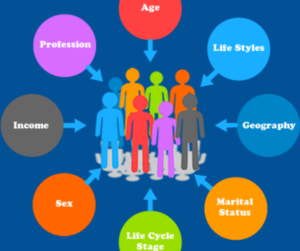Presentation and public speaking are skills that anyone can master. However, like any other skill, this requires a lot of practice and preparation.
It is the art of delivering messages to people. Now, how do you want to convey it? It’s your creativity.
Many people struggle to stand and speak in front of people. It is normal. Public speaking with confidence does not come naturally. You need to understand the basics and be well-prepared before you attempt.

Here we share the basics with those who want to become an effective speakers.
7 Effective Tips to Communicate Better:
1. Be organized and give a concise message
If you are disorganized, it will be very hard for the audience to follow you and get your point. You should have a clear message to deliver to the audience with a beginning, middle, and end in mind. Avoiding the use of technical terms that your audience may not understand and sticking to simple language will be more effective. Stick to your main points and use a few visual ads like slides, diagrams, and images to help illustrate your message.
2. Eye-contact
It is an art of charm. Proper eye contact makes you persuasive. You are connecting to the audience directly by looking at them, their eyes. Finish a thought and move on to the next. One thought, one look. In half or full sentences, look at one person.
3. Pair down your notes
Be conversational in public speaking, means use natural language, a relaxed tone, storytelling, and eye contact to engage the audience. Avoid complex notes and distracting slides by not reading from notes, keeping slides simple, and using visuals sparingly.
4. Voice
You have to be heard. Don’t speak too softly. Avoid filler words. Utilize the pause and punctuation. Stress the keywords. Maintain a proper mike distance.
5. Posture and physicality
Look natural and comfortable. This includes standing naturally to eye contact, interacting with the audience, and body movement. Don’t fidget with your hands, feet, or fingers.
Move for the purpose, stand, and act confident.
Body Language for an effective presentation:
- Facial expressions
- Smile
- Hand movements and gestures
- Posture
- Body and leg movement
- Vocal tone and pitch
- Appearance
- Space
6. Pause
It is crucial to pause or slow down your pace of speech. This is the time you give the audience to reflect on what you have just said. Pause and breathe. Take some time to listen to your audience and give them some time to think about what you are saying. Pausing before and after your speech, after every sentence, or before conveying any key points is more impactful for effective communication.
7. Connect to the audience
If you don’t keep it natural, you will lose your audience. If there is silence, turn that into an interesting one.
For one-on-one conversations or any presentation, you can emotionally connect with the audience through eye contact. Eye contact plays a significant role in persuasion. Eye contact can last long but make sure you convey a single thought, phrase, or idea.
Audience-centered approach
If you want to connect and make a difference rather than just delivering a speech, you need to let the audience know that you do care about them.
A big “no”: Speaker-centered
A big “yes”: Audience-centered
Don’t present to the walls but to the audience.
- Start with the audience
- Engage the audience/Engage with the audience
- End with the audience
Consider your audience at every point you deliver your speech.
Be aware of their:
Psychology
Understanding the attitudes, values, beliefs, and other psychological information.
Interest
Understanding people’s likes, dislikes, feelings, needs, and interests.
Demographics
Understanding the age, race, gender, level of education, religious beliefs of individuals, and so on.
If you understand your audience well, if they listen to you with interest, that is your victory!

Conclusion
Practice and preparation will help you master public speaking and effective communication. Be organized, maintain eye contact, use your voice effectively, have good posture, pause, connect with your audience, and keep your notes to a minimum. Learn the psychology, interests, and demographics of your target audience. Good communication interacts with and resonates with the audience.

